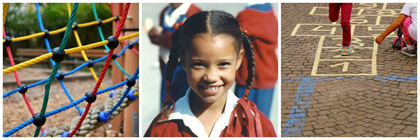 Before your child starts school, if you have any concerns about how they will participate in the school environment your child may need the help of an Occupational Therapist who will look at your individual child’s needs in terms of participating in the whole school day.
Before your child starts school, if you have any concerns about how they will participate in the school environment your child may need the help of an Occupational Therapist who will look at your individual child’s needs in terms of participating in the whole school day.
Many primary schools use a buddy bench/stop system so that your child knows where to go for help or find a friend to play with.
Please see below suggestions for your child if they have physical, visual or sensory difficulties.
Strategies to support children to stand in a line:
 Visual Cues (e.g. tape on the floor, squares or circle mats) - This will provide children with a visual boundary to assist them in identifying personal space as well as developing self-organisational skills.
Visual Cues (e.g. tape on the floor, squares or circle mats) - This will provide children with a visual boundary to assist them in identifying personal space as well as developing self-organisational skills.
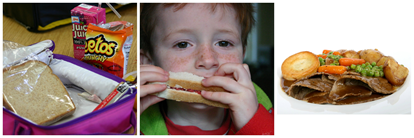 Participating at Lunchtime
Participating at LunchtimeThe first time your child goes to the dinner hall there are lots of things to think about:
The following are activity suggestions to help your child before they start school:
 The following are activities suggestions to try out with your child before going to school:
The following are activities suggestions to try out with your child before going to school:
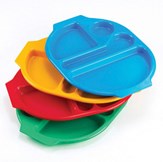 The following are activities suggestions to try out with your child before going to school:
The following are activities suggestions to try out with your child before going to school:
Please see below suggestions for your child if they have physical or sensory difficulties.
My child has physical difficulties, what can be done to help?
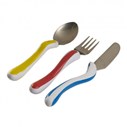
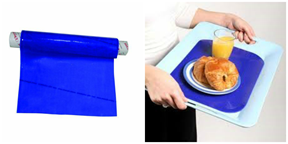
My child has sensory difficulties, what can be done to help?
My child has visual difficulties, what can be done to help?
 If your child has a visual impairment there may be access to a specialist worker either from the Local Authority of Voluntary Organisations such as Royal National Institute of Blind People (RNIB) who can provide guidance for parents and education staff and how best to support the child’s needs. For example, a Habilitation Specialist provides orientation and mobility skills. This would allow your child to familiarise with the new environment and make their way independently around the school setting.
If your child has a visual impairment there may be access to a specialist worker either from the Local Authority of Voluntary Organisations such as Royal National Institute of Blind People (RNIB) who can provide guidance for parents and education staff and how best to support the child’s needs. For example, a Habilitation Specialist provides orientation and mobility skills. This would allow your child to familiarise with the new environment and make their way independently around the school setting.
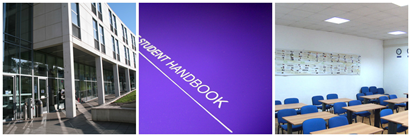 Your child may be very familiar with the layout of their primary school and can now easily find their way around. However, they will almost certainly find that their new secondary school is much larger and they have to go to numerous classes during the day.
Your child may be very familiar with the layout of their primary school and can now easily find their way around. However, they will almost certainly find that their new secondary school is much larger and they have to go to numerous classes during the day.